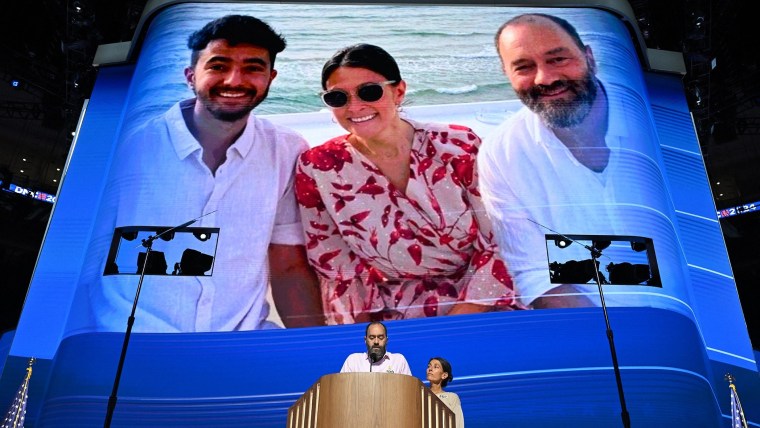A year ago, Israel and Saudi Arabia were talking with the U.S. at the United Nations meetings in New York about an agreement that could end hostilities between Israel and its Arab neighbors, reshaping the Middle East. Then Hamas terrorists attacked Israel, taking hostages and slaughtering around 1,200 Israelis. A year after the Oct. 7 massacre, most of the surviving hostages have not been released, more than 40,000 Gazans have died according to according to local health authorities, Prime Minister Benjamin Netanyahu’s popularity at home is soaring because of his military successes against Hezbollah, and the Biden administration has less influence than ever over Israel’s decision-making.
With Israel and Iran now teetering on the verge of all-out war, administration officials fear these escalating retaliatory exchanges could explode into a regional conflict — exactly what President Joe Biden has been trying to prevent since the day after Hamas’ surprise attack, when Hezbollah joined in and started sending rockets toward Israel.
Administration officials say Netanyahu now sees a brief window before the U.S. election to try to eliminate what he says is an existential threat.
Asked why the U.S. — Israel’s largest provider of weapons — has so little leverage over its closest ally, a senior official told me, “We have leverage, we haven’t always used it.” And administration officials say Netanyahu now sees a brief window before the U.S. election to try to eliminate what he says is an existential threat to Israel’s survival: Iran and its terrorist proxies’ determination to eliminate Israel as an independent state.
So how did Netanyahu resurrect his political support at home, which had all but collapsed after his military and intelligence agencies failed to detect the Hamas attack? It’s been a long and dangerous 12 months.
In the immediate aftermath of the massacre, there was worldwide horror and sympathy. But a few weeks later, when Israel bombed the Jabalia refugee camp in northern Gaza in an effort to kill a Hamas commander, the videos went viral. Analysis from satellite images suggested Israel had used 2,000-pound “bunker buster” bombs, capable of causing massive damage to anyone within hundreds of feet of impact.
The Arab world, the European public and protesters in the U.S. were outraged. Leading Democratic senators and lifelong supporters of Israel told me privately they were horrified at what they saw as a disproportionate use of force. Foreign service officers at the State Department complained about the use of an American-made bomb in the strike, a potential violation of congressionally mandated restrictions on the use of U.S. weapons. Meanwhile Israel’s initial siege of Gaza, which had cut off food, water and fuel, was creating a desperate humanitarian crisis.
For 11 months, CIA Director William Burns and Secretary of State Tony Blinken shuttled around the Middle East, negotiating with Israel, Egypt and Qatar — which represents Hamas — for a cease-fire and hostage release. There was one brief cease-fire in November, and more than 100 hostages from all over the world returned home. But every time Blinken anticipated or announced another imminent breakthrough, Netanyahu or Hamas — or both — would raise the stakes. On his 10th mission to the region, Blinken didn’t even stop in Israel. There was no deal to be had.
And then Hamas executed American Hersh Goldberg-Polin and five other hostages, a devastating blow to their courageous families.

The dominos continued to fall. In April, Iran retaliated for Israel’s bombing of an Iranian consulate in Damascus. Israel intercepted all but one of the drones and missiles with the help of the U.S. and other allies. Then, a rocket believed to have been fired by Hezbollah hit a soccer field in the Israeli-controlled Golan Heights, killing 12 youngsters. Israel again upped the ante, assassinating the Hamas political director in Iran’s capital — a dramatic display of Israel’s ability to penetrate Iranian defenses.
Arguably Israel’s most stunning demonstration of its reach was a coordinated operation that resulted in thousands of pagers used by Hezbollah members exploding, often in public. Dozens died and thousands were injured, according to Lebanese health officials. This was followed by the targeted assassination of the veteran Hezbollah leader Hassan Nasrallah, a killing Netanyahu approved from New York, just after addressing the United Nations General Assembly. Briefing reporters a few hours later, a senior Israeli official told us Israel would continue trying to eliminate Hezbollah, saying when your enemy is down, you don’t let him up.
But today, as Israel commemorates the grim anniversary of Oct. 7, hostage families live in dread of their loved ones being killed. Meanwhile, Biden seems paralyzed. As one U.S. official told me, Netanyahu knows Biden is in a political straightjacket. An emboldened Netanyahu will yet again likely ignore the president’s calls for a proportionate response; the Israeli leader may even take this moment to deal a decisive blow to Iran. A Saudi deal with Israel seems dead, for now. And the potential for a wider war involving the U.S. has never been greater.

